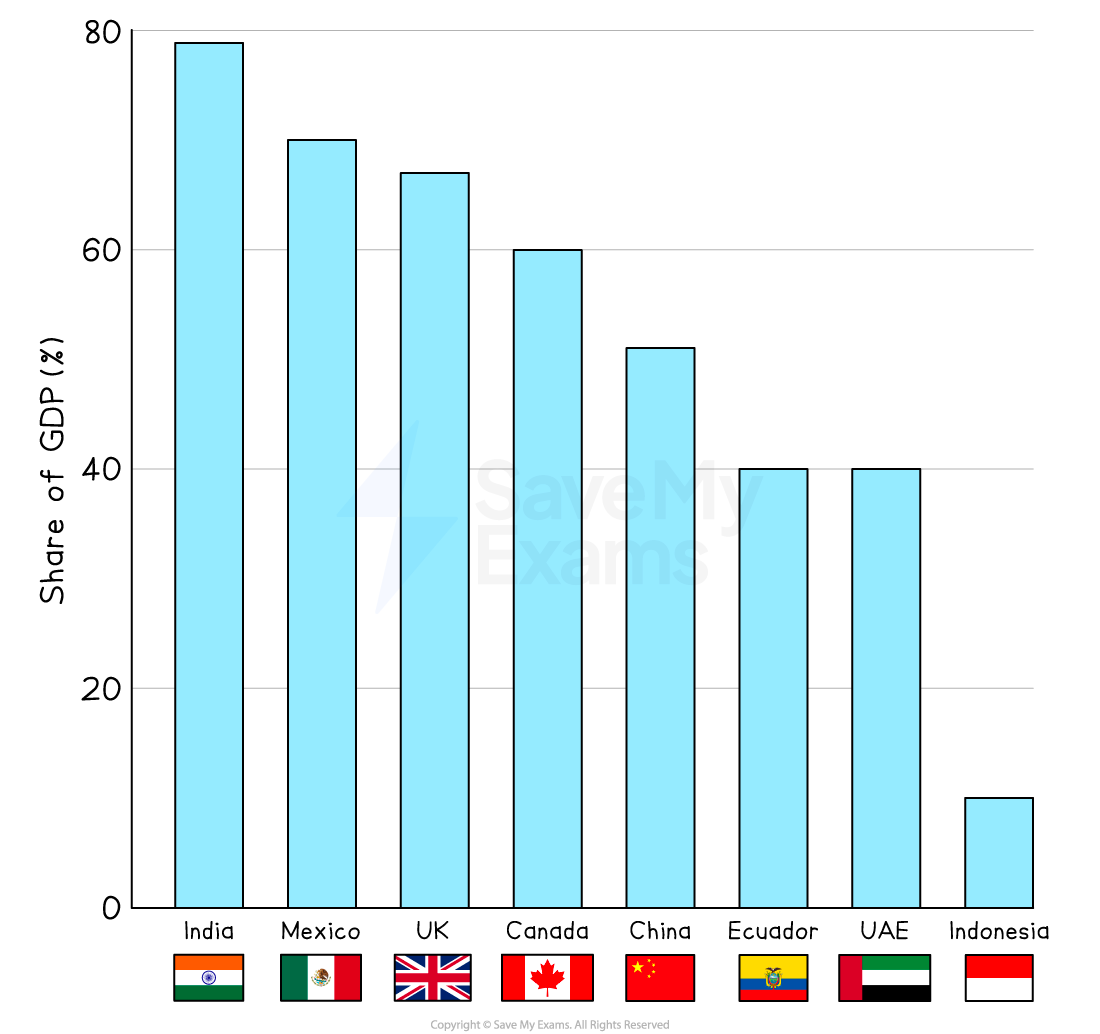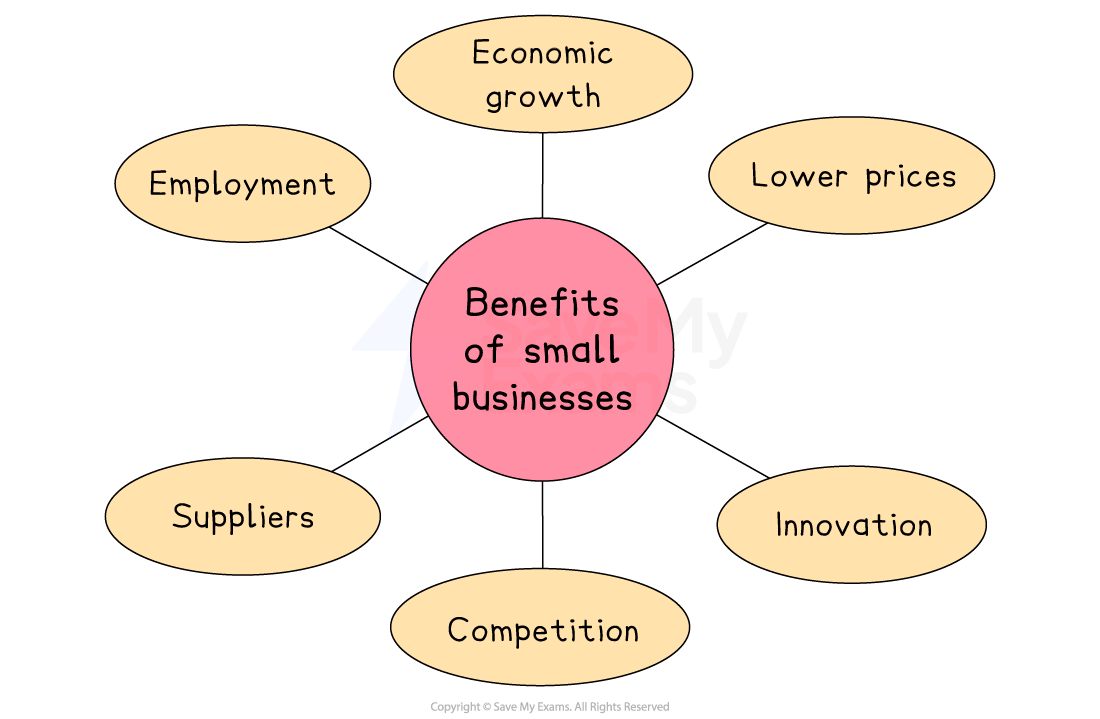Measurements of Business Size (Cambridge (CIE) A Level Business): Revision Note
Exam code: 9609
Methods used to measure business size
A range of stakeholders have an interest in understanding business size
Some suppliers prefer to deal with larger businesses as they are seen as less risky than small businesses
Governments can determine which businesses may need support to grow
Investors may want to compare businesses to determine which offers the best return
In some sectors, specific variables are used to measure business size
Hotels and guesthouses measure the number of rooms or beds
Restaurants measure the number of 'covers' they can cater for
Retailers measure the number of outlets they operate
Logistics businesses measure the number of vehicles they employ
Ways to measure business size
1. Size of the workforce
A measure of how many workers are in the business
Small and medium-sized businesses (SMEs) employ less than 250 workers
Large businesses have 250 or more workers
The method of production can influence this metric
Large capital-intensive businesses employ few workers
Smaller labour intensive businesses have many employees
Different workers' contracts make this measure unreliable
Some firms hire many part-time workers, while others have fewer full-time workers
Short-term, zero hours or agency worker contracts may not be included
2. Value of capital employed
A measure of all the capital (money, equipment, and buildings) invested in a business at a specific time
It is difficult to compare businesses with labour-intensive and capital-intensive production methods
European manufacturing businesses tend to have high levels of capital, such as robots, compared to firms in countries such as Vietnam and Indonesia
Property values differ across the world and between regions
E.g. The value of property in Singapore is significantly greater than property in mainland China
Value of business sales
The total sales revenue achieved during a trading period
It is calculated using the formula
Price x Quantity sold
Businesses sell very different products
Comparing a market stall selling sweets with a retailer of luxury handbags would be unrealistic, as their prices and volumes sold are very different
Selling prices vary between markets
Businesses may sell products to customers in low-income markets at a lower price than in a higher-income market
3. Value of business output
The financial worth of goods produced, even though they may not all be sold
It is calculated using the formula
Total costs x Quantity
High value output can be produced by businesses with very few employees or with limited capital employed
E.g. A bespoke jewellery maker may produce only a few expensive items each year
The value of output does not measure how successful a business has been at selling goods produced
If goods are left unsold, they are a poor measure of business size
4. Market capitalisation
The value of a company's issued shares
It is calculated using the formula
Share price x Number of shares
Share prices fluctuate so market capitalisation is a relatively unstable method of measuring business size
Sharp increases in share price can make it appear that a relatively small business has grown very quickly
A rapid decrease in the share price may make a business appear smaller whilst employing the same number of employees
5. Market share
The portion of a market controlled by a particular company, brand or product
It is calculated using the formula
(Business Sales ÷ Market Sales) x 100
In some cases, a large business may maintain a presence in a market dominated by smaller rivals to spread risk
E.g. Dunlop continues to manufacture and sell sportwear in a market dominated by brands such as Nike and Adidas
Examiner Tips and Tricks
Profit is not a measure of business size, though it can be used to measure business success.
A business with many employees may make a loss whilst a business with just one employee may make a profit. This does not mean that the business with one employee is the larger of the two.
Evaluating small businesses
In the European Union (EU) small businesses are classified as those employing 50 or fewer workers
In 2022, small businesses were responsible for approximately 49 percent of employment in the EU's economy
Italy, France, Spain and Germany had the highest number of small businesses in the trade bloc, concentrated in the retail sector
Reasons why small firms succeed
Personalised Service | Agile | Operate in Nice Markets |
|---|---|---|
|
|
|
Operating as a small business has a number of advantages:
They are easy to set up and, in many cases, require little start-up capital
They are managed by their owners, who maintain control of the business and determine its strategic direction
Owners are likely to have close working relationships with workers, encouraging loyalty
However, remaining as a small business can have some disadvantages:
Few sources of finance may be available, as owners are keen to retain full control and lenders consider them higher risk than larger firms
The business owner typically takes on all of the responsibility for decision-making, which can put them under significant pressure
There is little opportunity to achieve benefits of economies of scale
Strengths and weaknesses of family businesses
Many businesses are owned by more than one member of the same family
Some family businesses have traded for a very long time
Berenberg Bank was founded in 1590 and is one of the few remaining independently owned banks in Germany
Akerblads is a hotel in Tällberg, Sweden that is currently run by members of the 21st generation of the family after which it is named
The Neame family remains in control of Shepherd Neame, Britain’s oldest brewery, which was founded in 1664
In some countries, family-owned businesses make up a significant proportion of enterprises
Globally, 90% of businesses are family-owned, contributing significantly to GDP and employing many millions of workers
In India more than 79% of GDP is generated by family-owned businesses
Its largest example is Reliance Industries, founded in 1973 and run by the Ambani family
GDP contribution of family businesses

Strengths and weaknesses of family-owned businesses
Strengths | Weaknesses |
|---|---|
|
|
The role of small businesses in the economy
Small businesses bring a range of benefits to an economy

Employment
Small businesses employ a large proportion of the workforce in most economies
They account for 60 to 70 per cent of jobs in most OECD countries, with a particularly large share in Italy and Japan
In developing economies, small businesses create around 80% of new jobs
Economic growth
Growth in countries or regions with few large businesses is fuelled by small and growing businesses
UK government policies, including enterprise zones, encourage small businesses to set up in areas of industrial decline, such as South Wales and the North East
Lower prices
Small businesses often have lower wage and administration costs than large businesses
This may lead to lower prices for customers
Innovation and competition
Small businesses are often set up and run by creative entrepreneurs, whose ideas and problem-solving abilities bring new products and services to the market
This increases choice for customers and creates competition for larger firms
Suppliers
Small businesses can be important suppliers to large firms, offering innovative components, flexibility and adaptability, which can help them develop a strong unique selling point
E.g. Mark Levison supplies tailored audio equipment to luxury car manufacturer Lexus
The role of small businesses in different industrial sectors
Small businesses are particularly important in some industries
In the USA, small businesses make up a large proportion of firms operating in
Accommodation and food services, including hotels, restaurants and catering
Beauty and hairdressing services
EdTech, including online tuition and learning platforms
Retail, including small scale shops and online stores
Construction, including builders and services such as plumbers and electricians
Some industries, such as power generation and shipping, are dominated by larger businesses
Significant barriers to entry such as the level of capital investment or technical expertise, exclude small businesses
However, small businesses often provide tertiary functions for large businesses, such as accounting, property maintenance and market research

Unlock more, it's free!
Did this page help you?